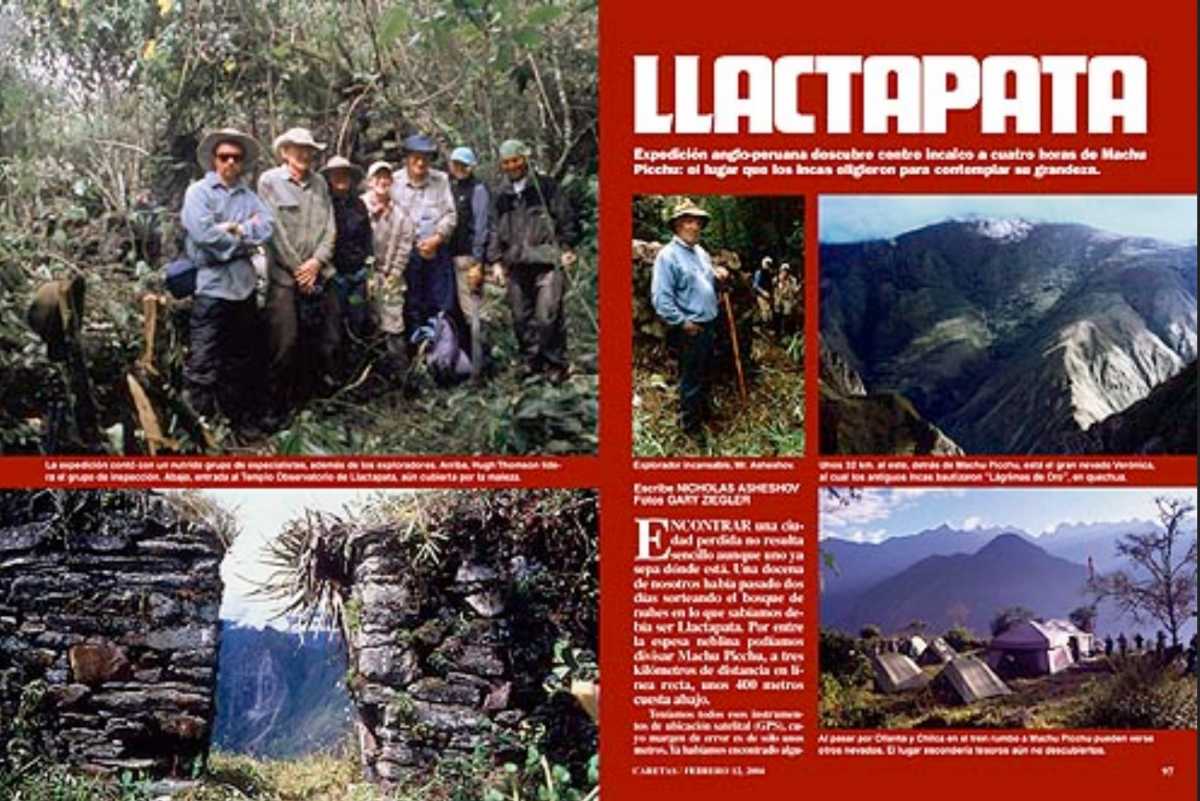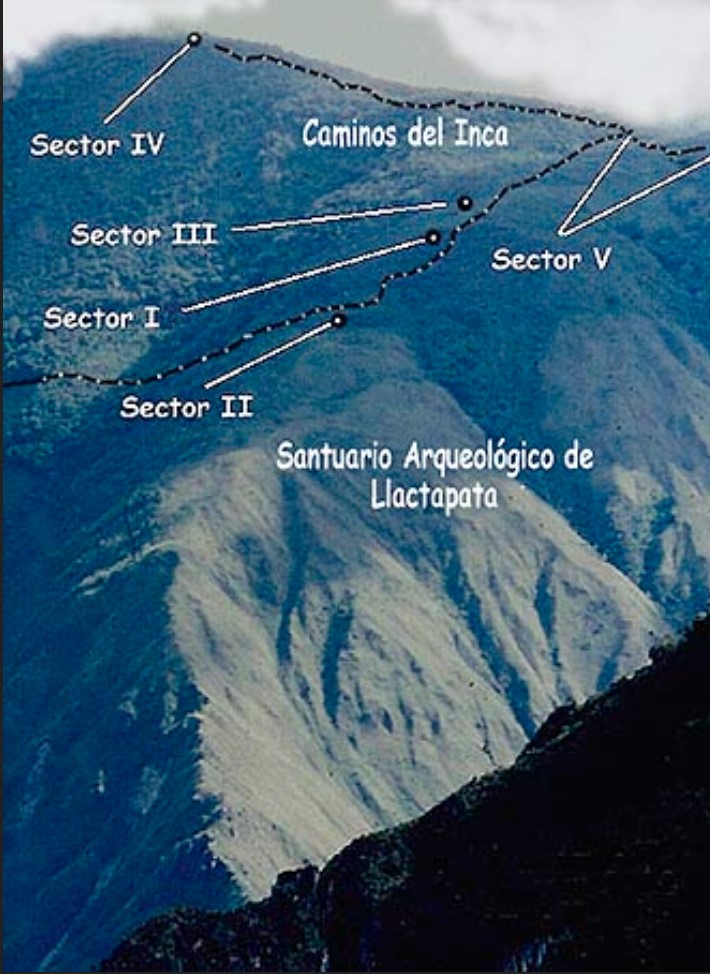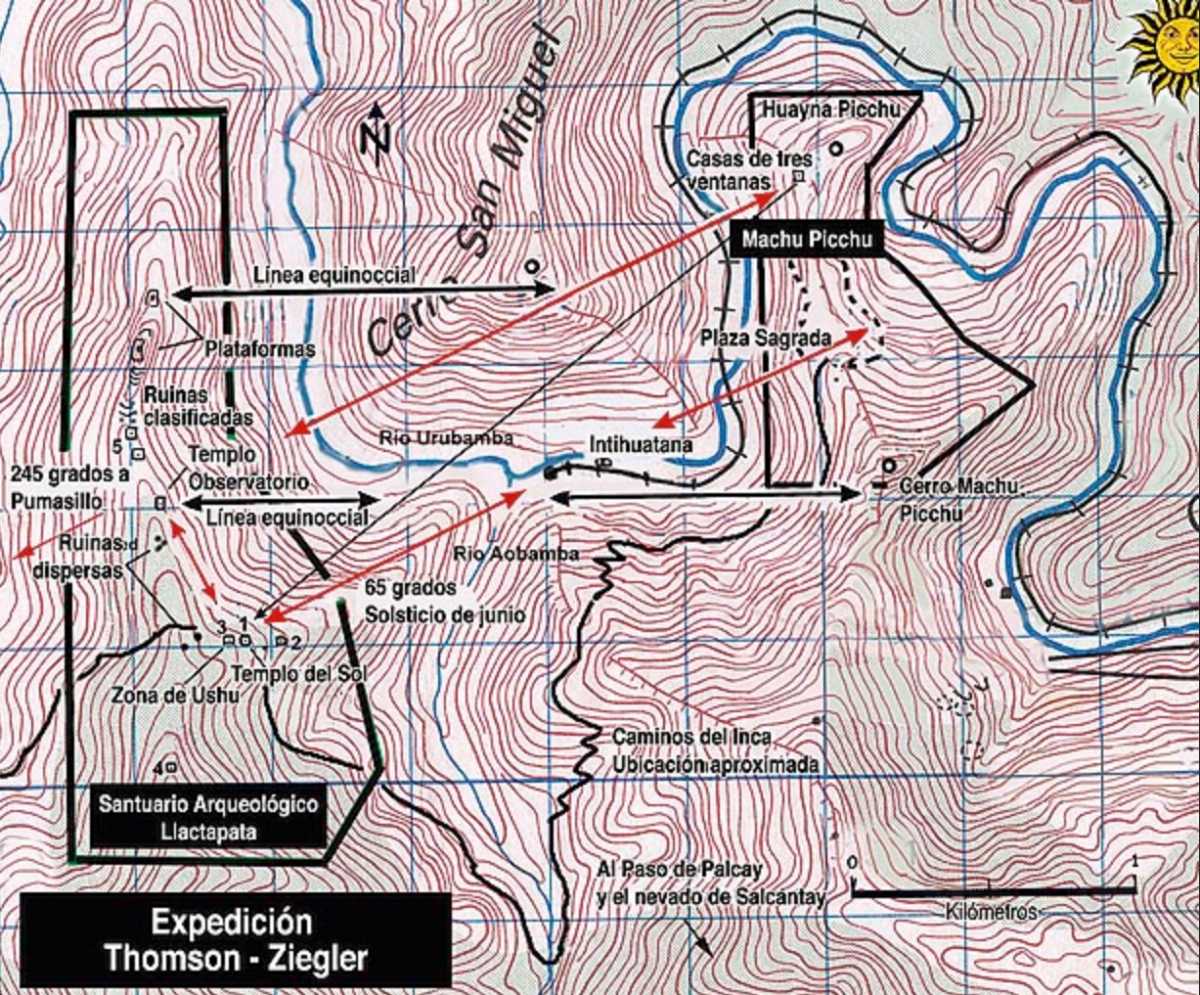- h
- Nosotros
- Why Us
- INCA TRAIL LLACTAPATA
- Salkantay Treks
- LLACTAPATA LODGE
- Contact Us

The expedition counted on a nourished group of specialists, in addition to the explorers. Above, Hugh Thomson leads the inspection team. Below, entrance to the Llactapata Observatory Temple, still covered by weeds. At wright; Tireless explorer, Mr. Asheshov. Next to; About 32 km. to the east, behind Machu Picchu, is the great snow-capped Veronica, to which the ancient Incas baptized "Tears of Gold", in Quechua. Below: As you pass through Ollanta and Chilca on the train heading to Machu Picchu, you can see other snowy peaks. The place would hide treasures not yet discovered.
Anglo-Peruvian expedition discovers an Inca center four hours from Machu Picchu: the place that the Incas chose to contemplate their greatness.

On these lines, an impressive view of the Llactapata Sanctuary. The Ways of the Inca travel it with amplitude. On the left, Amy Finger, an explorer, rests after cleaning the ruins.
FINDING a lost city is not easy even if you already know where it is. A dozen of us had spent two days sorting through the cloud forest in what we knew must be Llactapata. Through the thick fog we could see Machu Picchu, three kilometers away in a straight line, about 400 meters downhill.
We had all those satellite positioning instruments (GPS), whose margin of error is only a few meters. We had already found some promising Inca walls with remains of ceremonial niches. Several exploration groups had traveled the area in all directions and had found small clues, including a construction with two warehouses that appeared to be a temple. It was then when a member of the team found in the middle of the undergrowth an entrance with double jamb for the frame, unmistakable sign of all important Inca construction.
In a couple of days more we discovered dozens of more complex Inca constructions, hidden for 500 years in the thicket. At that time, we were sure we had found an impressive citadel. Also that this was the place that Hiram Bingham called Llactapata. Bingham spent miserable hours here in 1912, fighting with his muleteers and drawing the location of some structures. But his esteemed facts to the beat, as we now know, are inaccurate.
However, our own measurements quickly cast the image of a town with several well-defined sectors, including residences for the upper class, ceremonial chambers and platforms, all with spectacular views towards Machu Picchu and towards different surrounding snow-mountains. Perhaps the most exciting thing was that many of the main walls and corridors had an inclination of 65 degrees. This is, of course, in east-north-east direction, and coincides with the precise alignment of the appearance of the Sun during the s. XVI on the winter solstice, June 21, taking as reference Machu Picchu and Llactapata. But it did not take an astrophysicist - although we had one on the team - to tell us that Llactapata was a very special place.
It is located in a small chain of ravines, near the top of a steep slope that rises higher than Machu Picchu itself. Most of the photos we are used to seeing from Machu Picchu are taken from the other side, the north side. Very few people in modern times have seen Machu Picchu from the other side, from Llactapata, where it is appreciated above from the southwest. For example, the Huayna Picchu, the mound that dominates Machu Picchu in most photographs, is almost insignificant seen from the new angle offered by Llactapata. We could see the tourists in the Intihuatana and in the Huayna Picchu. But hidden in the jungle, as we were, there was no possibility that anyone could see us. Our conclusion was that this was the place that the Incas themselves chose to observe Machu Picchu.

Llactapata is a beautiful place from which one can contemplate one of the greatest dramas of the Andes and reflect on how little we know about the complex intellectual world of the ancient Peruvians. Our measurements drew a beautiful and new center in its entirety, capable of expanding our points of view and our understanding of Machu Picchu and the Incas themselves. Llactapata also adds an extra weight to one of the arguments that are woven around Machu Picchu. One group says that Machu Picchu was a ceremonial center, sacred. It was only the Inca Pachacútec country residence similar to the American Camp David, in the words of Richard Burger, the specialist in Inca culture at Yale University.
Johan Reinhard, who discovered the "ice ladies" on the snowy peaks near Arequipa and other areas of the Andes, affirms that Machu Picchu was located, designed and arranged as a "sacred center", in which It gave the unique convergence of geographical features, sacred mountains and a river, the Urubamba. All these elements gave the citadel astronomical and cardinal alignments. Llactapata could very well be interpreted as a nearby satellite of Machu Picchu, since the alignment of all the main walls seems to coincide with a ceremonial as well as an astronomical purpose.
Machu Picchu was certainly a mixture of the sacred and the practical, although the Incas themselves never made a distinction between the two concepts. For example, it is evident that Llactapata could be an important point of connection in the road network that extended from Cusco to Vitcos, deep in Vilcabamba, passing through Salcantay towards Choquequirao in the Apurímac.
We found the remnants of an Inca road that connects with the route of the "drawbridge", to the west of Machu Picchu. Llactapata reinforces the idea that Machu Picchu was the spiritual and administrative heart of a network of roads, small towns and commerce controlled by the government. It is not, as we are inclined to think, a Shangri-La lost in the clouds at the end of a winding road in the mountains. Or as it happens today, at the end of a small railway line.
The Neighbor City
Experts agree on the scientific importance of Llactapata
For Luis Guillermo Lumbreras, of INC, the discovery of Llactapata highlights the importance of Machu Picchu. Right, Johan Reinhard, archaeologist and discoverer of the "Juanita mummy".
At the beginning of last November, the Royal Geographical Society informed in London that one of its expeditions had discovered important Inca ruins, hidden in the cloud forest near Machu Picchu.
The expedition, led by British explorer and writer Hugh Thomson and American archaeologist Gary Ziegler, was supported and approved by the RGS and the Explorers Club of America. The famous astrophysicist McKim Malville of the University of Colorado and the veteran English explorer Nicholas Asheshov of the University of Cambridge participated. The new Llactapata - which should not be confused with another Llactapata about 30 km away. distance, near the beginning of the Inca Trail- is formed by five sectors that extend in several square kilometers, on a hill of lush vegetation. Dr. Luis Lumbreras, director of the National Institute of Culture and expert in Andean archeology, commented on the discovery of Llactapata: "This finding highlights again the importance of Machu Picchu and undoubtedly, with a better study, will give us greater scope on the Incas".
The archaeologist Johan Reinhard has described Llactapata as an "important discovery". Above all, he affirms, "reaffirms the need to expand the boundaries of the Historic Sanctuary of Machu Picchu to encompass and protect a larger area." So far, the ruins of Llactapata lack the protection of a National Park and, therefore, are vulnerable to all forms of looting. In fact, the looters have already done theirs in the past, and it is certain that today they continue to act with freedom.
Last year, the same team that just located Llactapata jumped to the frontlines when discovering another Inca citadel, Cota Coca, located in the middle of a deep river ravine in the vicinity of Choquequirao.
Source: http://www2.caretas.pe/2004/1810/articulos/llactapata.html
Author: NICHOLAS ASHESHOV
Authos of fotos: GARY ZIEGLER
Dominant Mountain 2019